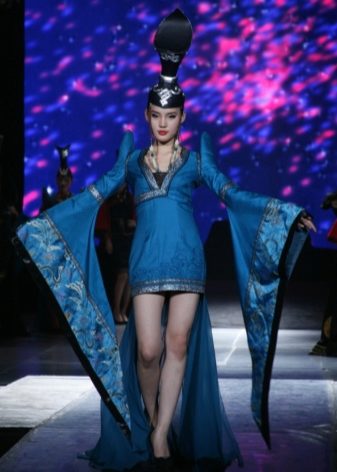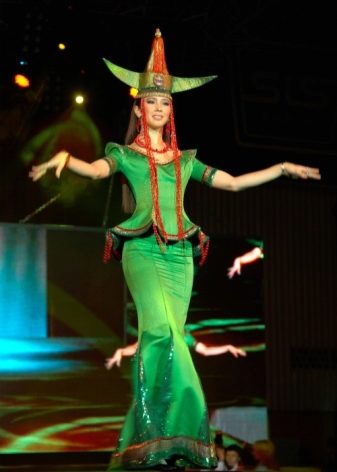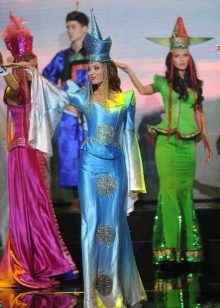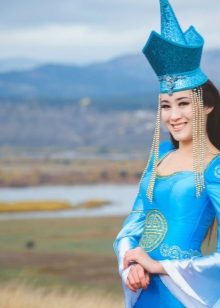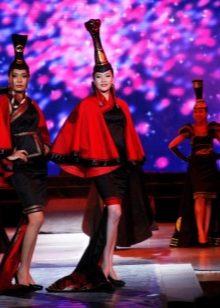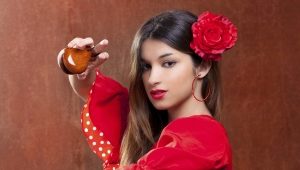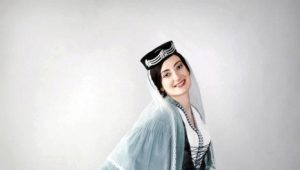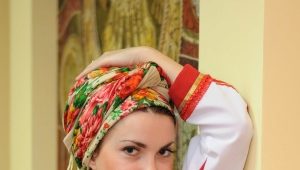Buryat national costume

As you know, Siberia is not the most densely populated part of Russia. Despite this, a large number of peoples who spoke a variety of languages have lived here for centuries. Among the Mongolian-speaking peoples of Siberia, the Buryats are considered the most numerous. According to one version, their name comes from the words "bu", which translates as "gray-haired" or "ancient", and "oirot" - forest people. So it turns out that the Buryats are an ancient forest people with a special culture, traditions and spirit, which are most clearly displayed in the Buryat national costume. It is not only practical, but also filled with symbols and signs that serve as the key to understanding the entire culture of this amazing people.
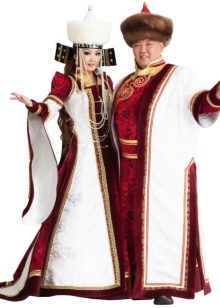

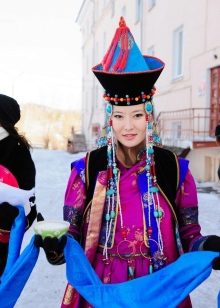
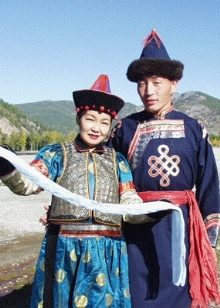
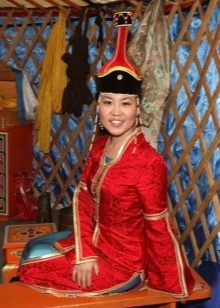
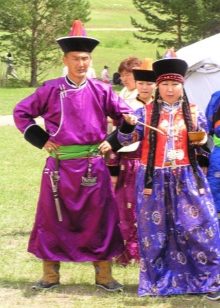
A bit of history
What the Buryat costume looked like in ancient times, we can only judge from the descriptions of travelers and diplomats who lived in the 17th - 18th centuries. There are no earlier written sources.
Little information can be obtained from ancient legends. For example, in the epic "Geser" it is mentioned that the sable skin spoke of the nobility and wealth of its owner, and the ornament and decorations on the belt could tell about the position in the society of its owner.
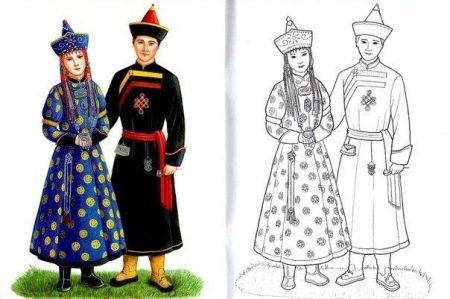
The first descriptions of the Buryat national costume were left to us by the Russian ambassador to China, N. Spafaria. From him we learn that in the XVII century.in Buryatia, cotton fabrics from distant Bukhara and China were popular. At the same time, clothes here began to be sewn from Russian and European fabrics.
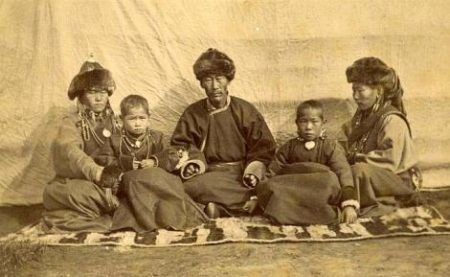
At the end of the 17th century, Evert Izbrant Ides, a Dutch merchant, was sent to Beijing at the head of the Russian embassy, who in Russia was called Elizariy Elizariev son of Izbrant. Returning from a trip, he wrote a book about his journey, where he described in detail the winter and summer national clothes of the Buryats, as well as their headdress. Other travelers also wrote about the Buryats. And in the 19th century, scientists and researchers took up their study.

Peculiarities
The Buryats are a nomadic people living in a harsh climate. It was these two factors that determined what their national costume became. So, the average Buryat in those distant times spent the whole day in the saddle, and therefore the clothes should not have interfered with him. She protected from the winds and warmed in the cold. The Buryats were mainly engaged in cattle breeding, and therefore they sewed from what was at hand - leather, wool, fur. Silk and cotton fabrics were bought from neighboring peoples.
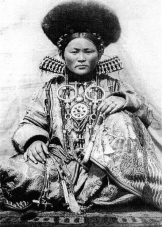
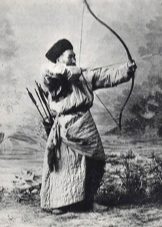
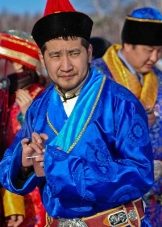
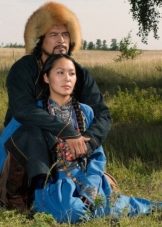
The Buryats lived on a large territory, at a considerable distance from each other, and therefore each clan had its own characteristics in the costume. Sometimes the differences were quite significant.
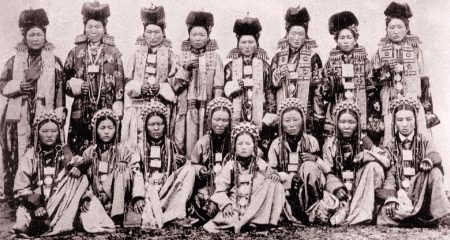
Colors and shades
Bathrobes - the main element of Buryat clothing in the old days, were sewn from blue fabrics. But there could be exceptions. Sometimes they were made of brown, burgundy or dark green material.
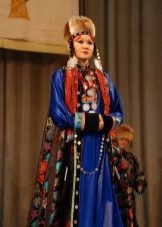


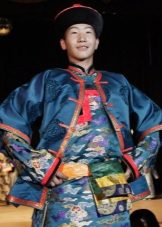
The men's robe was decorated with a special quadrangular border "enger", which had not so much a utilitarian as a symbolic meaning. Engar consisted of colored stripes, the top of which was supposed to be white. Later, when Buddhism began to spread among the Buryats, they began to make it golden yellow.
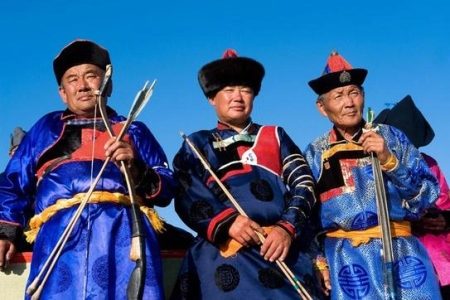
Among the Buryats, each color has its own symbol. Black is the earth, home and homeland, red is fire and life energy, blue is the sky.
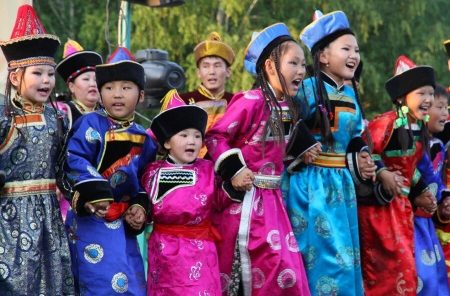
Fabrics and fit
As we mentioned earlier, the Buryats led a nomadic lifestyle and were engaged in cattle breeding. Therefore, they sewed their clothes from skins, wool and fur. Cotton fabrics and cloth were bought at fairs held in Irkutsk, Kirensk, Nerchinsk, Kyakhta and other cities.
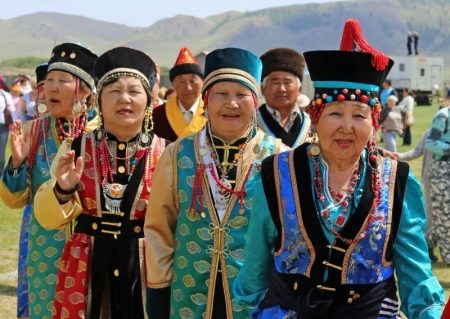
Since the winters in Buryatia are severe, there are winter and summer options in the costume. For sewing a winter dressing gown, which was called "degel", they used sheepskin trimmed with velvet. A summer everyday dressing gown (“terling”) was sewn from cotton fabrics, and a festive one was made from silk.
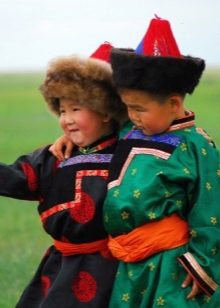
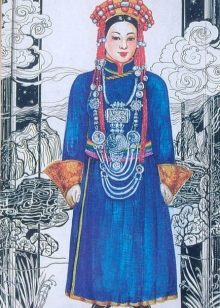

The robes were cut without shoulder seams. They fastened on the side. It protected from strong winds and warmed better. The length of the dressing gown had to cover the legs both when walking and when riding. In addition, such a long dressing gown could easily become a camp bed if necessary: they lay down on one floor, and covered themselves on the other.
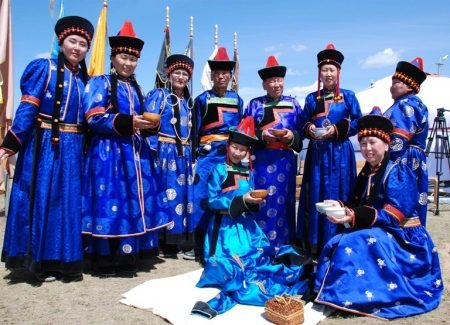
Varieties
The Buryat national costume, like any other, had its own varieties depending on the gender and age of its owner. As children, boys and girls were dressed the same. They wore straight robes, similar to men's. The peculiarity of the men's dressing gown was that it was not cut off at the waist, i.e. was direct. The sleeves were sewn with raglan. Such a robe was always girdled.
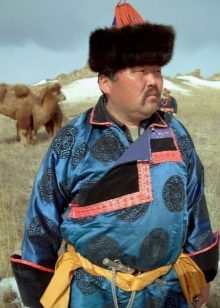
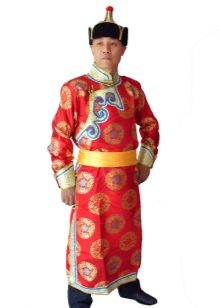
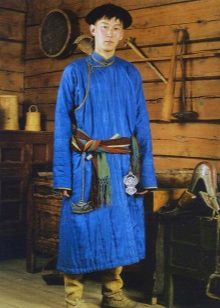
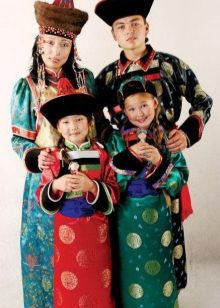
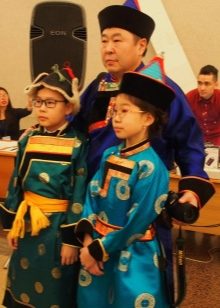
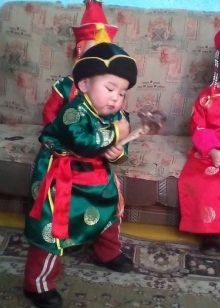
With age, the hairstyle has changed. In childhood, girls and boys had one braid on the top of their head, and the rest of their hair was shaved. At the age of 13-15, the girls' hair was no longer shaved, and after it grew back, it was braided into two braids at the temples. This was the first clear difference between a girl and a boy. At the age of 15-16, girls were put on a special “saazha” decoration on their heads.This meant that you can marry her.
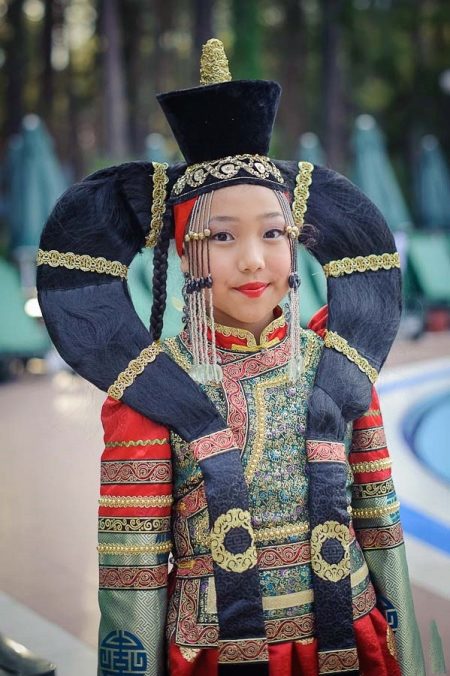
After the wedding, the young woman braided two special braids. Her clothes also changed. The set of clothes for women included a shirt (“samsa”), trousers (“umde”) and a dressing gown. The women's dressing gown, unlike the men's, was a skirt and a jacket sewn on the thallium. Such a dressing gown was fastened with special buttons - “tobsho”. The sleeves gathered at the shoulders. All married Buryat women must wear sleeveless jackets.
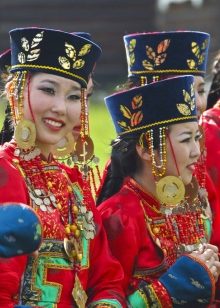
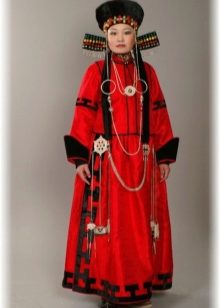
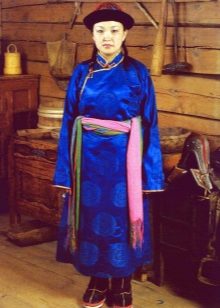
Accessories and shoes
The men's costume was complemented by two elements - a knife (“hutaga”) and a flint (“hete”). Initially, these things had a utilitarian meaning, but over time they became elements of costume decor. The scabbard and handle of the knife were decorated with chasing, gems and silver pendants. The flint and flint looked like a small leather bag, to the bottom of which a steel armchair was attached. It was also decorated with plaques with chased patterns. They wore a flint and a knife on their belt.

Women's jewelry was more elaborate. These are rings that were worn on each finger, sometimes even in several rows, and bracelets on both hands, and earrings, and temporal rings, and breast decorations. The latter consisted of many silver medallions, which could be square, triangular or round. Prayers were put into them, which served as a talisman.
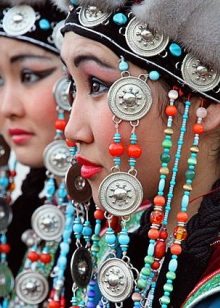
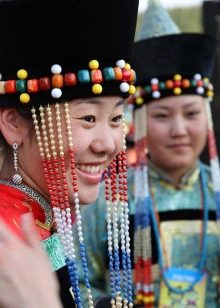

All Buryat men and women wore hats. They were round with small margins. Each hat had a pointed top, which was decorated with a silver pommel and tassels. They made hats mainly from blue fabrics. As in clothing, each element of the hat had its own symbolic meaning.
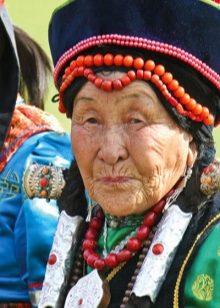
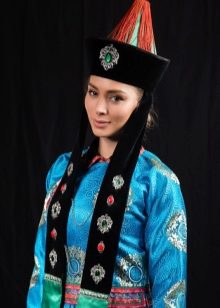
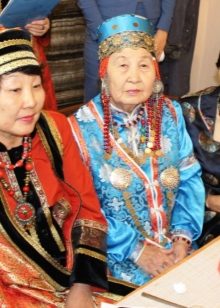
As shoes in winter, the Buryats wore high fur boots, which were made from the skin of foals, in the off-season - boots, the toe of which was pointed upwards.In summer, they wore shoes knitted from horsehair, which were attached to leather soles.
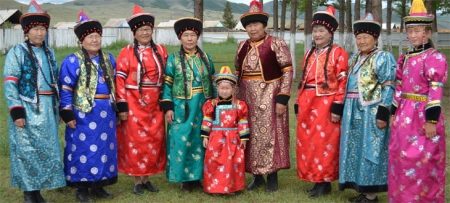
Modern models
Many elements of the national costume of the Buryats remained in hoary antiquity. You no longer have to spend the whole day in the saddle and cover yourself with a long warm robe if you had to stay overnight in the steppe. But many decorative elements, complex ornaments and systems of silver jewelry turned out to be so perfect that it would be a crime to forget about them. Modern fashion designers are happy to use them in their collections. Most often, the “altan-hee” (meander) ornaments, the “ulza” decorative weaving, as well as the trapezoid shape of the silhouette, the original cut of the sleeves and hats are used.
